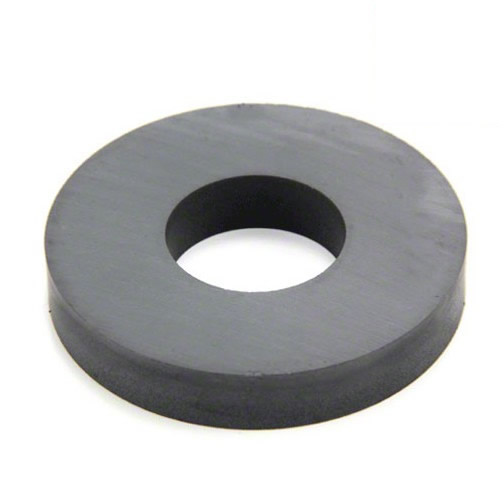

Item No.: C11-Ceramic-5
Magnet Shape: Ring / Tube
Material: Hard Ferrite (Ceramic)
Composite: Fe2O3 (BaCo3 or SrO3), Fe3O4 (SrCo3, SiO2)
Type: anisotropic or isotropic
Style: Sintered Permanent Magnet
Grade(USA Stardard): C11
Detailed magnetic properties data:
Residual Magnetic Flux Density (Br): 4.30 KGs (mT): 430 mT
Intrinsic Coercivity Force (Hcj): 2.51 KOe 200 KA/m
Coercivity Force (Hcb): 2.56 KOe 204 KA/m
Energy Density (BH)max: 4.32 MGOe 34.4 KJ/m³
Operating Temperature: -40 °C to +250 °C
Magnetisation Direction: Axial / Radially magnetized
Size Can be customized according to customer drawings:
Tolerance: +/-2% mm
Delivery time 7-25 days
Ceramic or Ferrite Magnets
The chemical composition of Ferrite magnets is SrO-6(Fe2O3), strontium hexaferrite. The raw materials used to produce ferrite magnets are strontium carbonate and iron oxide, both of which are readily available and low in cost. As a result, the use of ferrite magnets in most applications is more economical than other materials.
Sintered Ceramic/Ferrite magnets are formed by compaction in dedicated, multi-cavity dies followed by sintering in high temperature furnaces. This produces a hard, brittle part that requires specialized equipment for grinding to close tolerances. While physically quite strong, these magnets [like all cast or sintered magnetic materials] should not be considered a structural member in an assembly. And like most ceramics, they are brittle [not unlike glass] and should be handled with due care to avoid chipping and cracking.
The corrosion resistance of Ceramic/Ferrite is considered excellent, and no surface treatments are required. Ferrite magnets may have a thin film of fine magnet powder on the surface and for clean, non-contaminated applications some form of coating may be required. They are rather porous, and there may be applications were the surface should be sealed. Urethanes and epoxies work well. In addition, ferrite magnets lend themselves to printing.
